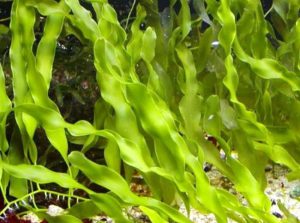
A coordinated effort to remove and eradicate an invasive algae species from Newport Harbor began on July 7.
The invasive algae, scientifically known as Caulerpa prolifera, was discovered in the China Cove beach area of Newport Harbor in March. Since then, the City has been working with multiple federal, state and local agencies to identify the extent of the algae growth and to develop a removal plan.
Using a careful and deliberate method over an anticipated 4-5 days, divers will extract the invasive plant from the seafloor using vacuum pumps. The material will then be pumped onshore into a container where the algae and other solids are separated from the harbor water. The discharged water will be handled with great caution to prevent reintroduction of the algae to the bay environment.
Caulerpa prolifera is not dangerous to humans or wildlife, but is highly invasive and can spread easily, choking out native plants and critical marine habitats. If not eliminated, the algae could spread within Newport Harbor and to critical marine habitats outside the bay.
Caulerpa prolifera and its close relatives in the genus Caulerpa have caused significant and expensive damage to coastal waters in California, Australia and throughout the Mediterranean.
After the removal effort in Newport Harbor is complete, divers will conduct surveys immediately following removal and over time to help ensure the species is completely eradicated and does not repopulate the area. Diver surveys will continue in surrounding areas, both inside and outside Newport Bay, to determine if other areas have been invaded.
The State Water Resources Control Board is funding the removal, as well as pre- and immediate post-removal diver surveys. The U.S. Fish and Wildlife Service and National Marine Fisheries Service are also providing funding to support follow-up surveys.
Caulerpa prolifera is a popular and common saltwater aquarium plant. It is bright green and consists of several blades linked by underground runners, which attach to the seafloor with small root-like structures.
Caulerpa and any other aquarium species should never be released into California waters, even by pouring down storm drains which often discharge to the ocean. To dispose of aquarium plants or animals, freeze them and dispose of them in the garbage.
For more information, or if you believe you have seen this invasive algae, please visit the Invasive Algae – Caulerpa prolifera web page at https://wildlife.ca.gov/Conservation/Invasives/Species/Caulerpa to submit a notification to CDFW.




